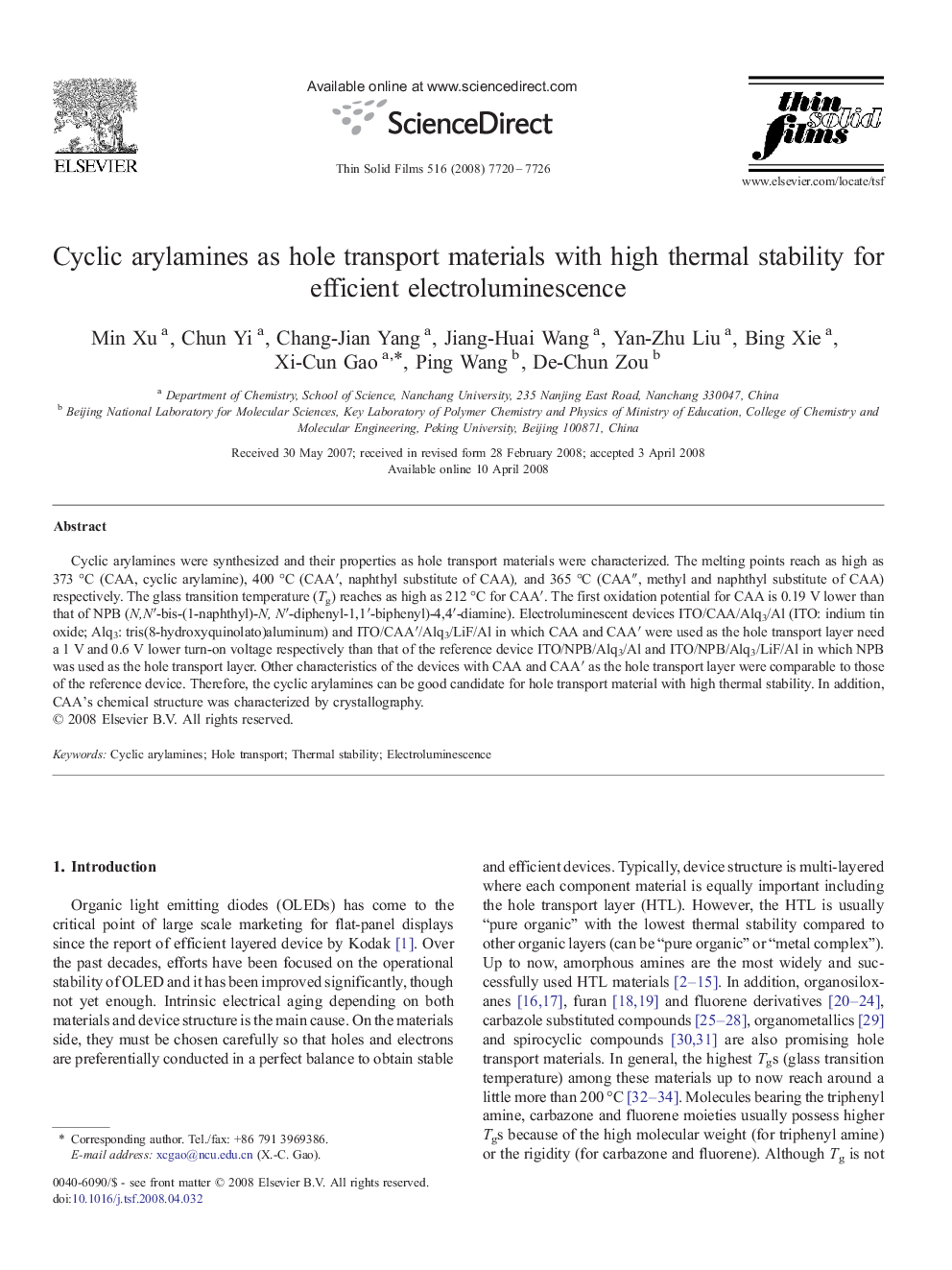| Article ID | Journal | Published Year | Pages | File Type |
|---|---|---|---|---|
| 1673942 | Thin Solid Films | 2008 | 7 Pages |
Cyclic arylamines were synthesized and their properties as hole transport materials were characterized. The melting points reach as high as 373 °C (CAA, cyclic arylamine), 400 °C (CAA′, naphthyl substitute of CAA), and 365 °C (CAA″, methyl and naphthyl substitute of CAA) respectively. The glass transition temperature (Tg) reaches as high as 212 °C for CAA′. The first oxidation potential for CAA is 0.19 V lower than that of NPB (N,N′-bis-(1-naphthyl)-N, N′-diphenyl-1,1′-biphenyl)-4,4′-diamine). Electroluminescent devices ITO/CAA/Alq3/Al (ITO: indium tin oxide; Alq3: tris(8-hydroxyquinolato)aluminum) and ITO/CAA′/Alq3/LiF/Al in which CAA and CAA′ were used as the hole transport layer need a 1 V and 0.6 V lower turn-on voltage respectively than that of the reference device ITO/NPB/Alq3/Al and ITO/NPB/Alq3/LiF/Al in which NPB was used as the hole transport layer. Other characteristics of the devices with CAA and CAA′ as the hole transport layer were comparable to those of the reference device. Therefore, the cyclic arylamines can be good candidate for hole transport material with high thermal stability. In addition, CAA's chemical structure was characterized by crystallography.
